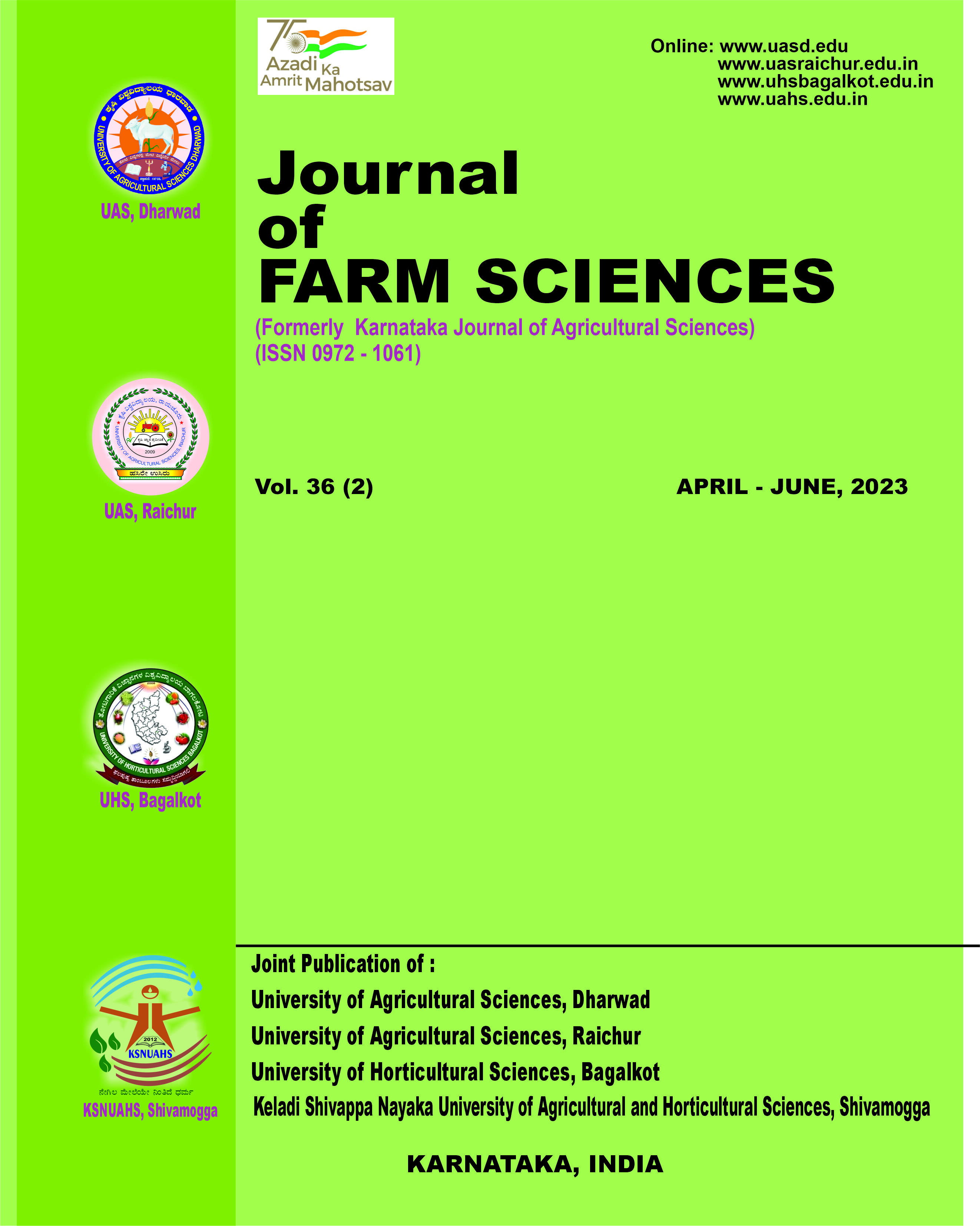Changes in growth and yield of pigeonpea genotypes under different growing environments
Keywords:
Biological yield, Pod damage, Sowing window, Standard meteorological week
Abstract
A field experiment was conducted at Regional Agricultural Research Station (RARS), Vijayapura, during kharif2021. The experiment was laid out in a split-plot design assigning four sowing windows to main plots viz., 1st fortnight ofJune, 2nd fortnight of June, 1st fortnight of July and 2nd fortnight of July, whereas genotypes to subplot viz., TS-3R, GRG-152 and GRG-811 with three replications. The results revealed that the seed yield progressively decreased with a delay insowing. A significantly higher seed yield was recorded under early sowings in the 1st and 2nd fortnight of June (1539 and1535 kg ha-1, respectively) and were statistically similar for seed yield. Among the genotypes studied, TS-3R recorded asignificantly higher seed yield (1455 kg ha-1) than other genotypes, which was on par with GRG-152 (1424 kg ha-1). Theincrease in the yield was attributed to better growth and yield attributes coupled with more rainfall (521 mm) receivedduring the cropping period. The pigeonpea sown in 1st fortnight of June recorded higher plant height (196.3 cm), primarybranch per plant (14.00), secondary branch per plant (18.21), the total number of pods (117.7), seed weight per plant (53.1)and 100-seed weight (12.5) compared to delayed sowings. The interaction of pigeonpea genotype TS-3R sown in 2ndfortnight of June recorded a significantly higher seed yield (1550 kg ha-1), which was closely followed by and statisticallyon par with the interaction of GRG-152 sown in 1st fortnight of June (1542 kg ha-1). The study concludes that the earlysowing of pigeonpea genotypes TS-3R and GRG-152 is better for realizing maximum productivity and profitability in thenorthern dry zone of Karnataka.
Published
2023-03-20
How to Cite
USHA, N., PATIL, S., NANDAGAVI, R., & KIRAN, B. (2023). Changes in growth and yield of pigeonpea genotypes under different growing environments. Journal of Farm Sciences, 36(01), 8-15. https://doi.org/10.61475/jfm.v36i01.334
Section
Research Article
Copyright (c) 2023 Journal of Farm Sciences

This work is licensed under a Creative Commons Attribution-NonCommercial-NoDerivatives 4.0 International License.


